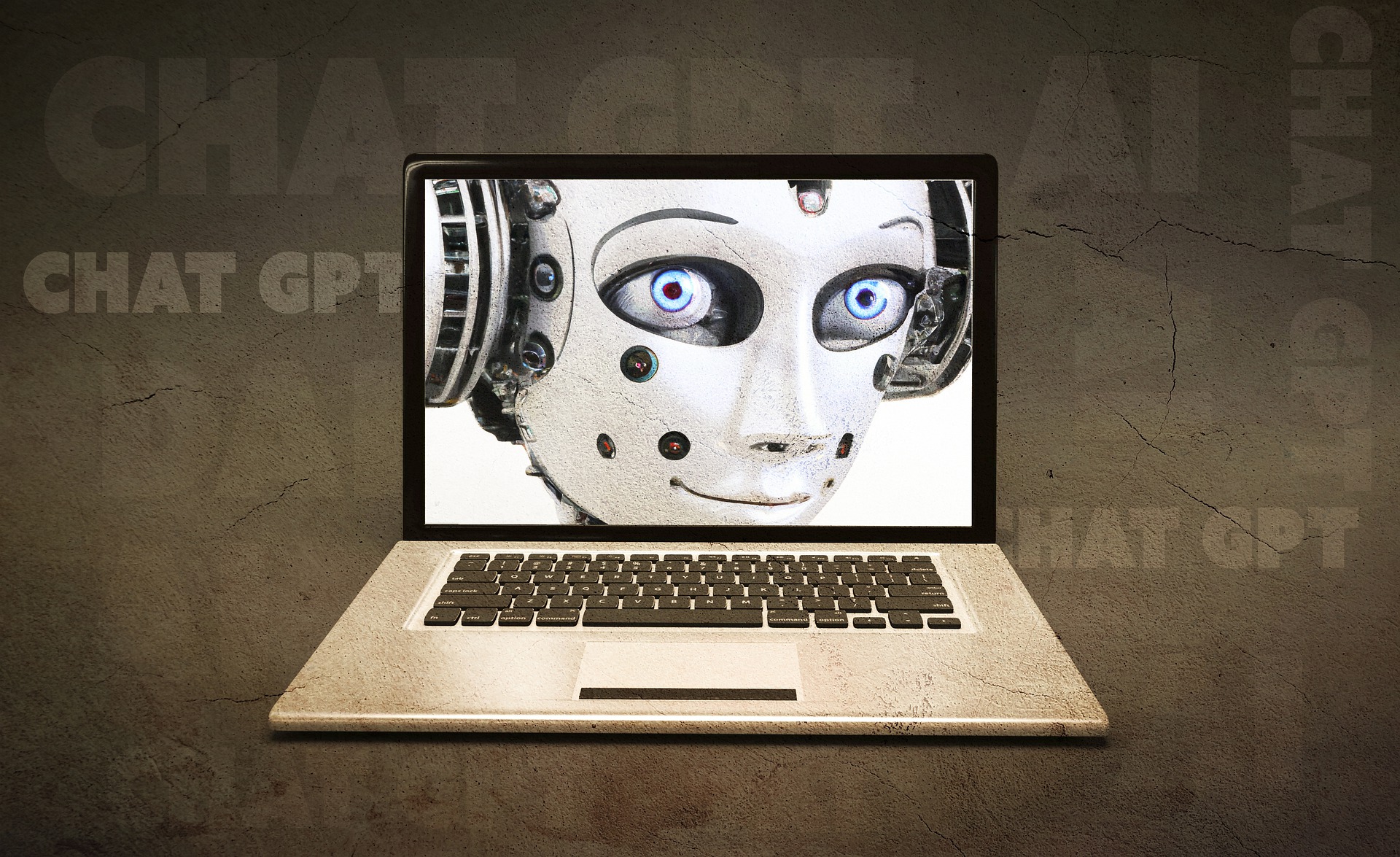In this digital era where human interaction has become increasingly important, the emergence of revolutionary conversational AI models has sparked excitement and curiosity. One such model that has generated buzz in recent times is ChatGPT. But what exactly is ChatGPT? How does it work? What are its benefits and limitations? This blog post explores the ins and outs of ChatGPT, providing valuable insights into its optimization tips, common use cases, and even glimpses into future advancements in this transformative technology. Join us on this fascinating journey into the world of ChatGPT and uncover the endless possibilities it holds.
What Is Chatgpt?
Chatbot technology has made significant advancements in recent years, and one such innovation is Chatgpt. But what exactly is Chatgpt? Chatgpt, short for “Chat Generative Pre-trained Transformer,” is an advanced artificial intelligence model developed by OpenAI. It is designed to simulate human-like conversations and generate contextually relevant responses in real-time. Unlike traditional chatbots, which rely on pre-programmed responses, Chatgpt uses deep learning techniques to understand and respond to human queries with remarkable precision and accuracy.
How Does Chatgpt Work?
Chatgpt relies on a powerful language model that has been trained on a massive amount of text data from the internet. The model learns patterns, nuances, and context from this extensive training data, allowing it to generate coherent and natural language responses. It employs a transformer architecture, which enables it to handle long-range dependencies and capture intricate relationships between words and phrases. The model also uses reinforcement learning algorithms to fine-tune its responses based on user feedback, thereby continuously improving its conversation abilities.
Benefits Of Using Chatgpt
There are several compelling benefits to using Chatgpt. Firstly, its ability to mimic human-like conversation makes it ideal for providing customer support, virtual assistance, and interactive experiences. Businesses can leverage Chatgpt to automate their customer service processes, reducing costs and improving response times. Secondly, Chatgpt can handle a wide range of user queries across various domains, making it versatile and adaptive. Moreover, it can generate responses in multiple languages, catering to global audiences seamlessly.
Additionally, Chatgpt’s real-time response capabilities make it suitable for chat-based applications, such as messaging platforms and social media bots. Its AI-powered responses can engage users effectively, enhancing user experience and satisfaction. Furthermore, Chatgpt’s continual learning abilities enable it to stay up-to-date with the latest trends and information, ensuring that users receive accurate and relevant responses.
| Common Use Cases For Chatgpt | Future Advancements In Chatgpt Technology |
|---|---|
|
|
Limitations Of Chatgpt
While Chatgpt showcases remarkable conversational abilities, it is not without its limitations. One major challenge is its potential to generate biased or inappropriate responses. Since the model is trained on internet data, it may inadvertently perpetuate biases present in the training material. Efforts are being made by OpenAI to mitigate this issue through robust content monitoring and filtering systems.
Another limitation of Chatgpt is its occasional inability to recognize ambiguous queries or provide accurate responses in complex or specialized domains. As with any deep learning model, Chatgpt’s performance relies heavily on the quality of training data. It may struggle with rare or out-of-context queries that deviate from its training corpus.
Despite these limitations, Chatgpt represents a significant leap forward in chatbot technology. Its advancements in natural language processing and deep learning techniques offer a promising outlook for the future of conversational AI.
How Does Chatgpt Work?
ChatGPT is an advanced language model developed by OpenAI. It is designed to generate human-like text responses based on the provided input. This powerful AI tool has gained significant attention due to its ability to initiate and sustain conversational interactions. But how does ChatGPT actually work?
At the heart of ChatGPT’s functioning lies a deep learning technique known as a Transformer. Transformers are neural networks specifically designed for sequence-to-sequence tasks, such as natural language processing. The model is trained on a large dataset, containing a wide range of internet text, to understand various linguistic patterns and generate contextually relevant responses.
When you interact with ChatGPT, you input a prompt or message to the system. The model then processes the given text, searches for patterns, and predicts the most suitable response. The prediction process involves generating a probability distribution over the possible next words, considering the training data and context. ChatGPT utilizes this distribution to select the most likely word or phrase to form the response, often creating coherent and contextually relevant replies.
- Although ChatGPT excels at generating responses, it does have certain limitations. As an AI system, it is sensitive to the input phrasing and may produce different answers for slight variations. The model can also be sensitive to misinformation or biased content present in training data, potentially leading to biased or inaccurate responses. It is important to be cautious when utilizing ChatGPT for critical tasks or when seeking factual information.
- Moreover, ChatGPT has a tendency to be verbose and overuse certain phrases. It can sometimes provide answers that sound plausible but are not entirely accurate. This is because the model learns from data present on the internet, which might contain incorrect or misleading information. Therefore, it is essential to verify the generated responses independently before considering them as absolute truth.
- ChatGPT’s operation involves a combination of algorithms and techniques, including attention mechanisms, tokenization, and probabilistic modeling. It processes text in chunks called tokens, which can represent individual words or smaller units of meaning. By understanding the context and relationships between these tokens, ChatGPT generates coherent responses that resemble human conversation.
| Benefits of Using ChatGPT: | Limitations of ChatGPT: |
|---|---|
| 1. Provides immediate responses | 1. Sensitivity to input phrasing |
| 2. Can assist with brainstorming ideas | 2. Potential for biased responses |
| 3. Enhances overall user experience | 3. Verbose and sometimes inaccurate |
| 4. Can handle a wide range of topics | 4. Dependence on training data quality |
Benefits Of Using Chatgpt
ChatGPT, developed by OpenAI, is a cutting-edge language model that uses advanced natural language processing techniques to provide powerful conversational experiences. Its ability to generate human-like responses and engage in meaningful interactions has made it a popular choice for various applications. In this blog post, we will explore the benefits of using ChatGPT and how it can enhance user experiences.
Enhanced Customer Support: One of the significant benefits of using ChatGPT is its potential to revolutionize customer support services. With its ability to understand and respond to user queries in real-time, ChatGPT can provide prompt and accurate assistance. Customers can receive instant answers to their questions, helping them resolve issues quickly and efficiently. This not only improves customer satisfaction but also reduces the workload on support teams.
Efficient Content Creation: Content creation is a time-consuming task, requiring extensive research and writing efforts. However, with ChatGPT, this process can be significantly streamlined. By providing the model with specific instructions and topics, users can generate high-quality content, such as blog posts, articles, or product descriptions, in a matter of minutes. This not only saves time but also enables individuals and businesses to produce a large volume of content more efficiently.
Language Learning and Practice: ChatGPT can be a valuable tool for language learning and practice. Users can engage in conversations with the model, allowing them to improve their language skills by actively participating in dialogue. ChatGPT can provide corrections, suggest alternative phrases, and offer explanations, acting as a language tutor for learners. This interactive and personalized learning experience can aid in vocabulary expansion, grammar improvement, and overall fluency development.
- Improved Virtual Assistants: Virtual assistants have become increasingly popular, helping users with various tasks, from setting reminders to providing weather updates. Integrating ChatGPT into virtual assistants can enhance their capabilities, enabling them to understand and respond to user queries more effectively. With its natural language processing abilities, ChatGPT can provide intelligent and context-aware responses, making virtual assistants more helpful and user-friendly.
| Benefits of Using ChatGPT | |
|---|---|
| Enhanced Customer Support | Efficient Content Creation |
| Language Learning and Practice | Improved Virtual Assistants |
Limitations Of Chatgpt
ChatGPT is a cutting-edge language model developed by OpenAI. It has gained significant attention for its ability to generate human-like text and engage in conversations across various topics. While ChatGPT showcases remarkable advancements in natural language processing, it also comes with certain limitations that need to be considered.
1. Lack of Contextual Understanding: One of the limitations of ChatGPT is its lack of robust contextual understanding. Although it can generate coherent responses, it often fails to grasp the contextual nuances of a conversation. This can lead to inaccurate or nonsensical answers, especially in complex or ambiguous queries. Users need to be cautious while interpreting the responses generated by ChatGPT to avoid misinformation.
2. Bias and Inappropriate Content: Another limitation of ChatGPT is its potential to generate biased or inappropriate content. The model is trained on a vast amount of internet text, which includes biased and offensive content. Consequently, ChatGPT might unknowingly produce responses that perpetuate stereotypes, offensive language, or harmful misinformation. OpenAI has implemented moderation measures, but some biases may still surface during conversations.
3. Sensitivity to Input Phrasing: ChatGPT is highly sensitive to slight changes in input phrasing, which can result in varying responses. While this aspect can sometimes be useful, it can also lead to inconsistent or unexpected answers. Users might need to experiment with different phrasings to obtain the desired response. Understanding this limitation can help in optimizing the conversations with ChatGPT.
The limitations mentioned above showcase the challenges associated with developing and utilizing language models like ChatGPT. It is essential to be aware of these limitations to make the most out of this powerful tool while ensuring responsible and accurate use.
Tips For Optimizing Chatgpt Conversations
Tips For Optimizing Chatgpt Conversations
Chatgpt is an advanced AI language model that has revolutionized the field of conversational AI. It is capable of generating human-like text responses, making it an invaluable tool for various applications such as customer support, virtual assistants, and content creation. However, to achieve optimal results and enhance the quality of conversations, it is essential to optimize the usage of Chatgpt. In this blog post, we will explore some valuable tips for optimizing Chatgpt conversations.
1. Define Clear Conversation Context: Providing clear and concise context is crucial for Chatgpt to generate accurate and relevant responses. Clearly state the user’s query, desired outcome, or any necessary background information. By doing so, Chatgpt can better understand the conversation and provide more useful responses.
2. Use System and User Prompts: When interacting with Chatgpt, you can use system and user prompts strategically. System prompts set the behavior and style of Chatgpt, influencing its responses. User prompts, on the other hand, are used to guide the model by providing an initial user message. Experimenting with different prompts can help achieve the desired conversational tone and domain-specific responses.
3. Iterate and Experiment: Optimizing Chatgpt conversations requires continuous iteration and experimentation. Test different input formats, elaborate on prompts, or adjust the context to find the best results. By experimenting and fine-tuning your approach, you can improve the model’s performance and deliver more satisfying conversations for users.
| Best Practices | Impact |
|---|---|
| Use specific and detailed prompts | Increases accuracy and relevancy of responses |
| Regularly evaluate and adjust conversation context | Improves understanding and generates better responses |
| Experiment with different system and user prompts | Customizes the conversational experience |
Implementing these tips will assist you in optimizing Chatgpt conversations and ensuring a seamless user experience. Remember that Chatgpt is an ever-evolving technology, and continuous improvement is necessary to maximize its potential. By leveraging its capabilities and fine-tuning the conversation setup, you can unlock the full potential of Chatgpt and deliver exceptional AI-powered conversations.
Common Use Cases For Chatgpt
ChatGPT is an advanced language model that utilizes deep learning techniques to generate human-like responses in natural language conversations. It has gained significant popularity due to its ability to simulate human-like interactions and provide helpful responses across a wide range of applications. In this blog post, we will explore some of the common use cases where ChatGPT has proven to be extremely beneficial.
1. Customer Support: ChatGPT can be deployed as a virtual customer support agent to handle customer queries and provide instant assistance. By understanding customer intent and responding with relevant information, ChatGPT can effectively provide personalized support, reducing the need for human intervention and enhancing customer satisfaction.
2. Content Generation: ChatGPT can assist content creators in generating ideas, overcoming writer’s block, and enhancing their creativity. It can provide suggestions, help with brainstorming, and even generate entire paragraphs or articles based on a given prompt. This makes it a valuable tool for writers, bloggers, and journalists who are looking to streamline their content creation process.
3. Virtual Assistants: ChatGPT can be leveraged to build virtual assistants or chatbots that can perform various tasks such as answering frequently asked questions, scheduling appointments, providing recommendations, and even performing basic transactions. By integrating ChatGPT with existing systems, businesses can automate routine tasks and improve their overall efficiency.
4. Language Learning: ChatGPT can be used as a language practice partner for language learners. It can engage in conversations, correct grammar mistakes, and provide explanations for complex language concepts. This interactive approach to language learning can help learners improve their fluency, vocabulary, and confidence in a foreign language.
| Advantages of ChatGPT in Common Use Cases: | Limitations of ChatGPT in Common Use Cases: |
|---|---|
|
|
Despite the limitations, ChatGPT has proved to be a useful tool across various industries and domains. Its ability to understand and generate human-like responses has opened up new possibilities for automation and improved user experiences. As more advancements are made in natural language processing and model training techniques, we can expect even greater potential for ChatGPT in the future.
Future Advancements In Chatgpt Technology
Chatbots have become an integral part of our daily lives, helping us with various tasks from customer service to personal assistance. With the advent of advanced natural language processing (NLP) models like ChatGPT, the capabilities of chatbots have significantly improved. However, the future holds even more exciting possibilities for ChatGPT and the field of conversational AI. In this blog post, we will explore some of the potential advancements in ChatGPT technology that we can expect in the near future.
1. Enhanced Multimodal Capabilities: Currently, ChatGPT primarily relies on text-based inputs and outputs. However, future advancements aim to incorporate multiple modes of communication, including images, videos, and audio. This means that users will be able to have more dynamic and interactive conversations with the chatbot, allowing for a richer user experience.
2. Improved Contextual Understanding: One of the limitations of current chatbot models is their limited ability to maintain context over longer conversations. The future advancements in ChatGPT technology will focus on addressing this issue by improving the model’s understanding of context. This will allow the chatbot to provide more accurate and relevant responses, making conversations with ChatGPT feel more natural and seamless.
3. Customizability and Personalization: In the future, ChatGPT is expected to offer more options for customization and personalization. Users will have the ability to fine-tune the chatbot’s behavior and preferences according to their specific needs and preferences. This will further enhance user experience and make interactions with ChatGPT feel more personalized and tailored.
| Advancements in ChatGPT Technology |
|---|
| Enhanced Multimodal Capabilities |
| Improved Contextual Understanding |
| Customizability and Personalization |
These are just a few examples of the future advancements we can expect in ChatGPT technology. As researchers and developers continue to push the boundaries of conversational AI, the capabilities of chatbots like ChatGPT will continue to evolve and surprise us. Whether it’s enabling more natural and interactive conversations or offering highly personalized experiences, the future of ChatGPT holds immense potential for transforming the way we interact with AI-powered chatbots.
Frequently Asked Questions
What is ChatGPT?
ChatGPT is an AI language model developed by OpenAI that is designed to generate human-like text responses in conversational settings.
How does ChatGPT work?
ChatGPT is trained using Reinforcement Learning from Human Feedback (RLHF) approach. Initially, human AI trainers have conversations and provide model-generated responses. The model is then fine-tuned using a method called Proximal Policy Optimization (PPO).
What are the benefits of using ChatGPT?
Using ChatGPT can provide several benefits, such as efficient customer support, automated chatbots, personalized user experiences, and enhanced natural language understanding in various applications.
What are the limitations of ChatGPT?
ChatGPT has some limitations, including generating incorrect or nonsensical responses, sensitivity to input phrasing, tendency to be excessively verbose or biased, and lack of clarification when uncertain about a query.
What are some tips for optimizing ChatGPT conversations?
To optimize ChatGPT conversations, it is recommended to provide specific instructions, experiment with temperature settings to control response randomness, and iterate on the model’s responses to improve overall performance.
What are some common use cases for ChatGPT?
ChatGPT can be used in a variety of applications, such as virtual assistants, content generation, language translation, tutoring systems, and interactive storytelling.
What are the future advancements in ChatGPT technology?
OpenAI is continuously working on advancing ChatGPT technology. They aim to reduce biases, improve the model’s understanding of instructions, and provide users with enhanced customization options to align with their values.








